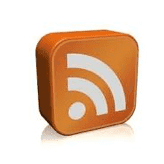Do you start your morning by visiting numerous websites to find the latest information and updates? Do you find it annoying trying to remember lots of different log in names, user names and passwords? RSS feeds can help you eliminate this time consuming process.
So what is RSS anyway?
RSS stands for Really Simple Syndication or Rich Site Summary. In its simplest form RSS can be described as a list of a website’s new or updated content. It is a format for delivering regularly changing web content straight to your email inbox.
RSS was originally developed to allow news services to syndicate their content by displaying headlines, links and article summaries on other web sites.
What is the point?
The main purpose of an RSS is to manage the organisation and collection of information from the internet. RSS is a time management tool for businesses and people who regularly use the web. It allows you to stay updated by retrieving the latest content from the sites you are interested in.
You save time by eliminating the need to visit each site individually. There is also the added bonus of ensuring your privacy, as you do not need to sign up to each individual site’s newsletter.
How do I start?
To start receiving RSS feeds you need an RSS aggregator, more commonly referred to as a ‘reader.’
There are a lot to choose from, some popular feed readers include Amphetadesk (Windows, Linux, Mac), FeedReader (Windows), and NewsGator (Windows – integrates with Outlook). There are also a number of web-based feed readers available including My Yahoo, Bloglines and Google Reader.
Once you have decided which Feed Reader is best for you it is a matter of finding sites that offer an RSS service. On most sites you can easily see if RSS is offered by the inclusion of icons with the acronyms RSS, XML or RDF.
To add the feed to your reader simply follow the instructions provided for your chosen RSS reader. It will automatically keep track of your feeds and let you know when they are updated, saving a lot of precious time.

